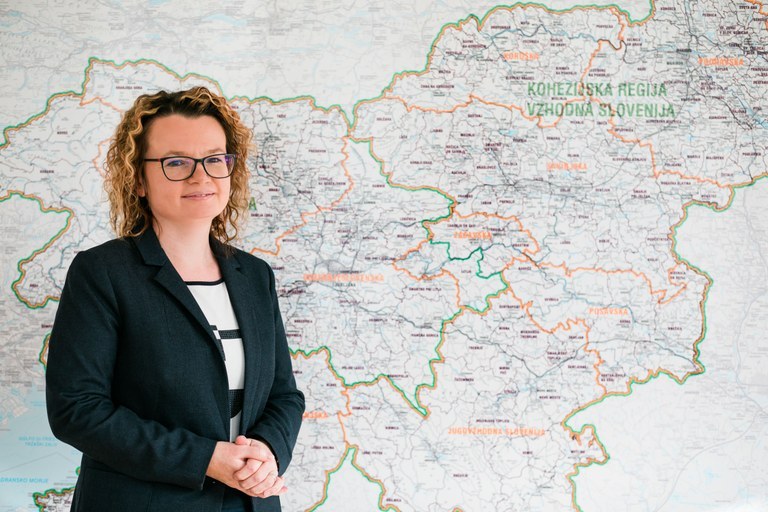
Ljubljana, 23 June 2021 – State Secretary mag. Monika Kirbiš Rojs today attended the 2nd regular meeting of the development council of cohesion region Vzhodna Slovenija in Zagorje ob Savi. Ms Kirbiš Rojs spoke about the progress made in implementing cohesion policy in the current period, the developments concerning the national Recovery and Resilience Plan and the progress made so far in preparing the 2021-2027 documents.
In her speech, Ms Kirbiš Rojs stressed that spending under the current programming period has seen an upward trend, with the absorption performance considerably improving. ‘’We’re well aware of the importance and the potential that cohesion funding has for Slovenia and its development and we’re doing everything in our power to make sure the available cohesion policy funding will be fully spent by the end of 2023, including the funding made available under the React-EU initiative,’’ assured State Secretary.
She also spoke about the Recovery and Resilience Plan. According to the schedule, the assessment by the Commission should be finalised sometime in July and the document should then be adopted by the EU Council. ‘’We expect to have the first calls for proposals out in the fall or towards the end of the year,’’ she explained.
Despite intensive implementation of the current financial perspective and the preparation of the Recovery and Resilience Plan, drafting of the key documents for the programming period 2021-2027 is in full swing at the Government Office for Development and European Cohesion Policy. The dialogue with Commission services on draft partnership agreement is in its final stage. State Secretary explained that the available 2021-2027 funding will be channeled through one operational programme which will cover the European Regional Development Fund, the European Social Fund Plus, the Cohesion Fund and the Just Transition Fund for the two coal regions, i.e. Zasavje and Šaleška dolina valley. ‘’EU funding that will be channeled through one operational programme will help us bridge development gaps between Slovenian regions,’’ said State Secretary. She also underlined the importance of communication with the stakeholders and called on all partners to actively engage in the preparation process. Representatives of both cohesion regions are expected to provide considerable input in terms of the content, proposed measures, criteria and indicators specific to either of the two cohesion regions or individual statistical regions.
By 2030, Slovenia has secured record high funding from various EU funding mechanisms, which is why it is necessary, more than ever, to use the available cohesion policy funding and the funding made available to Slovenia under the NextGenerationEU recovery instrument in a complementary manner. ‘’The funds provided under various EU funding mechanisms should be seen as one big chunk. That is the only way we can address the impacts of the Covid-19 pandemic and as a country get prepared to face future challenges,’’ stressed State Secretary and emphasised that the two cohesion regions and local communities would be an indispensable partner in this process.
The participants also discussed the mechanism Agreement on the development of region which is under the responsibility of the Ministry of Economic Development and Technology. The Government Office for Development and European Cohesion Policy proposed that the mechanism should undergo significant simplification in the upcoming period and should be made more efficient to facilitate and speed up absorption.





